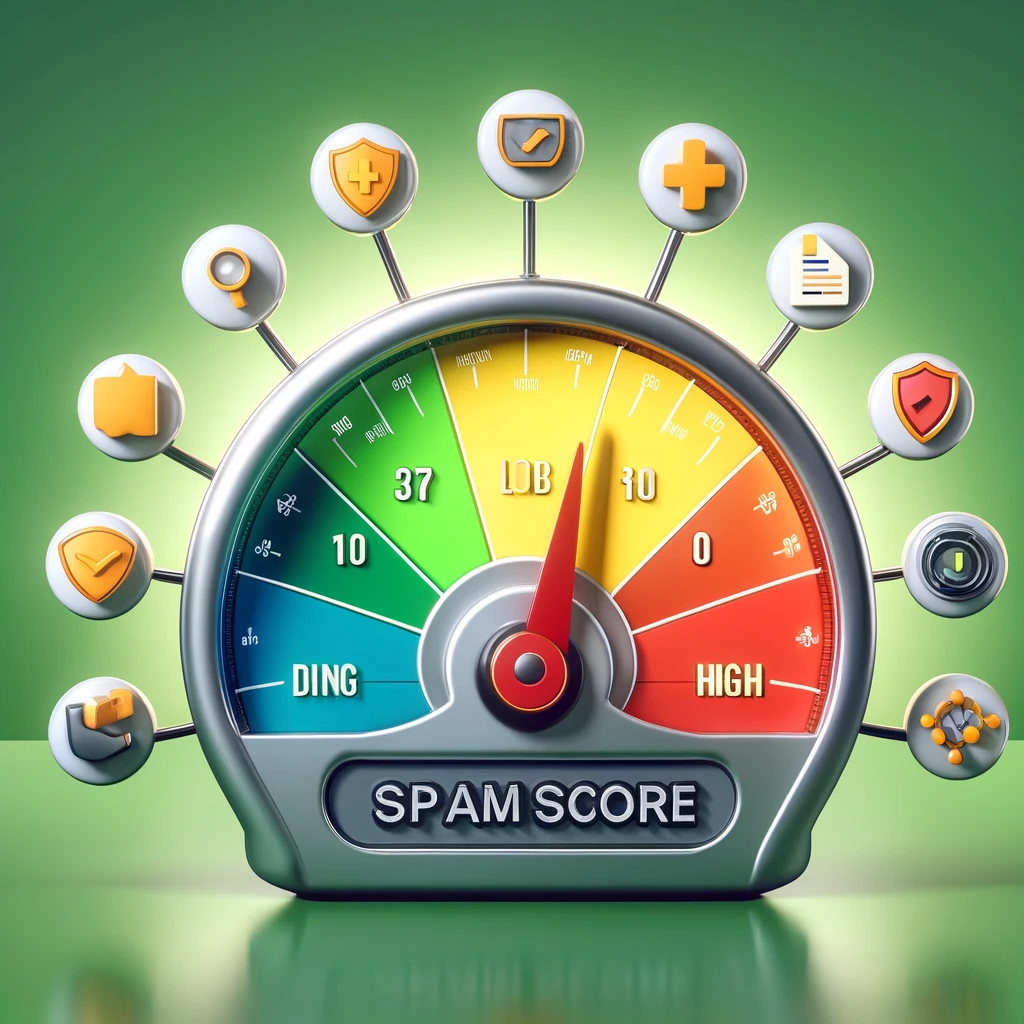In the world of digital marketing, maintaining a healthy online presence is crucial for the success of any business or website. One important metric that webmasters and SEO professionals should monitor is the Moz Spam Score. This metric helps determine the trustworthiness of your website in the eyes of search engines. In this article, we will explore what the Moz Spam Score is, why it matters, and how you can check it.
Contents
What is Moz Spam Score?
Moz Spam Score is a metric developed by Moz, a leading SEO software company. It measures the likelihood that a website might be penalized or banned by search engines based on certain characteristics. This score ranges from 0 to 100, with a higher score indicating a higher likelihood of being considered spammy by search engines.
Factors Influencing Moz Spam Score
Here are the 27 common characteristics used for Spam Score identification:
- Low Domain Authority
- Few External Links
- High Ratio of Followed to Nofollowed Links
- Small Content Size
- Exact Match Anchor Text
- Thin Content
- Low Link Diversity
- Low Number of Root Domains Linking
- Keyword Stuffing
- Unnatural Link Patterns
- Large Number of Ads
- Excessive Footer Links
- High Proportion of Links from Low-Quality Sites
- Affiliate Links
- Hidden Text or Links
- Spammy TLDs (Top-Level Domains)
- High Link Growth Rate
- Duplicated Content
- Mirror Sites
- Keyword-Dense Meta Tags
- High Outbound Link Count
- Short Domain Registration
- Private WHOIS Information
- Suspicious Redirects
- High Ratio of Followed to Total Links
- Penalized Sites Linking
- Few Branded Links
Understanding these factors can help webmasters take proactive steps to maintain a healthy website.
Why is Moz Spam Score Important?
Monitoring your Moz Spam Score is crucial for several reasons:
- SEO Health: A high Spam Score can negatively impact your search engine rankings. By keeping your score low, you ensure better SEO performance for your website and potentially higher ranking positions even for keywords with high keyword difficulty.
- Reputation Management: Websites with a high Spam Score may be perceived as untrustworthy, affecting your brand’s reputation.
- Proactive Measures: Regularly checking your Spam Score allows you to identify and address potential issues before they lead to penalties.
How to Check Your Moz Spam Score
Checking your Moz Spam Score is a straightforward process. Here are the steps to follow:
Step 1: Create a Moz Account
To access Moz’s tools, you need to create an account. Moz offers both free and paid plans, but checking your Spam Score is available even with the free plan.
- Visit the Moz website at moz.com.
- Click on the “Sign Up” button and provide the required information to create your account.
- Confirm your email address to complete the registration process.
Step 2: Access the Link Explorer Tool
Once your account is set up, you can use Moz’s Link Explorer tool to check your Spam Score.
- Log in to your Moz account.
- Navigate to the “Link Explorer” tool from the main dashboard.
- Enter your website’s URL in the search bar and click “Analyze”.
Step 3: View Your Spam Score
After the analysis is complete, you will see a detailed report about your website’s link profile. This report includes your Spam Score along with other important metrics such as Domain Authority, Page Authority, and the total number of backlinks.
Step 4: Interpret the Results
Interpreting your Spam Score involves understanding the different components of the report:
- Spam Score: This is the overall score indicating the likelihood of your site being considered spammy.
- Link Metrics: Review the quality and quantity of your backlinks. A diverse and natural link profile can help lower your Spam Score.
- Anchor Text Analysis: Check the anchor text used in your backlinks. Avoid overuse of exact match keywords.
Step 5: Take Action
If your Spam Score is high, it’s essential to take corrective measures. Here are some steps you can follow:
- Audit Your Backlinks: Use the Link Explorer tool to identify and analyze your backlinks. Look for spammy or low-quality links that might be harming your score.
- Disavow Bad Links: Use Google’s Disavow Tool to disassociate your site from harmful backlinks.
- Improve Content Quality: Ensure your website has valuable and original content. Avoid thin or duplicated content.
- Diversify Your Links: Aim for a natural link profile by acquiring high-quality backlinks from diverse sources.
- Regular Monitoring: Periodically check your Moz Spam Score to ensure your site remains in good standing.
Alternatively, you can use this free domain authority checker tool to check your DA, PA, SS, and other metrics.
Why is Moz Spam Score Important?
Monitoring your Moz Spam Score is crucial for several reasons.
SEO Health
A high Spam Score can negatively impact your search engine rankings. Search engines like Google use various signals to determine the quality and relevance of a website. A high Spam Score suggests that your site exhibits characteristics commonly associated with penalized or banned sites. This can lead to lower search engine rankings, reduced organic traffic, and diminished visibility in search results. By keeping your Spam Score low, you demonstrate to search engines that your site adheres to best practices, increasing the likelihood of better SEO performance. A low Spam Score indicates a healthy, trustworthy site, which search engines are more likely to rank higher.
Reputation Management
Websites with a high Spam Score may be perceived as untrustworthy, affecting your brand’s reputation. Users and potential customers tend to avoid sites that seem unreliable or potentially harmful. A high Spam Score can signal to visitors that your site might be associated with spammy practices, low-quality content, or even malicious activities. This perception can deter users from engaging with your site, leading to a decline in customer trust and loyalty. Maintaining a low Spam Score helps build and preserve a positive online reputation, reassuring users that your website is credible and trustworthy.
Proactive Measures
Regularly checking your Spam Score allows you to identify and address potential issues before they lead to penalties. By monitoring your Spam Score, you can detect problematic trends early and take corrective action to mitigate risks. This proactive approach involves auditing your backlink profile, removing or disavowing harmful links, and ensuring your content and SEO practices align with search engine guidelines. Regularly addressing these issues prevents them from escalating into significant problems that could result in penalties or bans from search engines. Staying vigilant and proactive in managing your Spam Score helps maintain a healthy online presence and avoid costly penalties.
Best Practices for Maintaining a Low Moz Spam Score
Maintaining a low Spam Score requires continuous effort and vigilance. Here are some best practices:
- Regular Backlink Audits: Regularly review your backlink profile to identify and remove harmful links.
- Quality Content: Focus on creating high-quality, informative, and engaging content that attracts natural backlinks.
- Ethical SEO Practices: Avoid black-hat SEO techniques such as link buying or using link farms.
- Engage with Your Audience: Encourage user engagement through comments, shares, and other interactions to build a trustworthy online presence.
- Stay Updated: Keep yourself informed about the latest SEO trends and algorithm updates to adapt your strategies accordingly.
Interpreting Your Moz Spam Score
Understanding how to interpret your Moz Spam Score is crucial for maintaining a healthy website.
Within Link Explorer, the Spam Score indicates the percentage of sites with features similar to the site you’re analyzing that have been penalized or banned by Google. This score is derived from Moz’s machine learning model, which identified 27 common characteristics among millions of banned or penalized sites in their dataset.
- Low Spam Score: 1%-30%
- Medium Spam Score: 31%-60%
- High Spam Score: 61%-100%
Source: Moz.com
Spam Score Checker: What is Spam Score? – Help Hub – Moz
How to Use Spam Score
Your Spam Score
A high Spam Score does not necessarily mean that your site is spammy. The percentage indicates a variety of potential signals, ranging from content concerns to low authority metrics.
Since Spam Score is based on correlation with penalization rather than causation, it’s not always necessary to change these factors on your site. If you have not experienced any penalties, a Low or Medium score should not be a cause for concern. Instead, use this percentage to assess the quality of inbound links to your site. This can help you identify which links might need further investigation or removal.
Another Site’s Spam Score
Again, a high Spam Score for another site does not automatically mean it is spammy. This percentage reflects a range of potential signals, from content issues to low authority metrics.
Since this metric is based on correlation with penalization rather than causation, you shouldn’t immediately disregard sites or disavow links with higher Spam Scores. Use it as a starting point for further investigation. Evaluate the site’s content and its relevance to your link profile before making decisions about disregarding or disavowing links.
What is Considered a High Spam Score?
In the context of Moz’s Spam Score, a high score indicates a significant likelihood that a website might be penalized or banned by search engines. Here’s a detailed breakdown:
High Spam Score
A Spam Score between 61% and 100% is considered high. This range suggests that the website exhibits many of the 27 characteristics identified by Moz as common among penalized or banned sites. Having a high Spam Score means the site has a considerable number of red flags that are often associated with spammy or low-quality websites.
Implications of a High Spam Score
- Increased Risk of Penalties: Sites with a high Spam Score are at greater risk of being penalized by search engines, which can lead to a drop in rankings and visibility.
- Trustworthiness Concerns: High Spam Scores can damage a website’s reputation, making it appear untrustworthy to both users and search engines.
- Urgent Need for Action: A high score necessitates immediate action to identify and rectify the issues contributing to the elevated Spam Score.
How to Address a High Spam Score
- Audit Your Backlinks: Conduct a thorough review of your backlink profile to identify any suspicious or low-quality links.
- Disavow Toxic Links: Use Google’s Disavow Tool to disassociate your site from harmful backlinks.
- Improve Content Quality: Ensure your site has high-quality, original content that provides value to users.
- Enhance Link Diversity: Aim for a diverse backlink profile with links from reputable and relevant sources.
- Regular Monitoring: Continuously monitor your Spam Score and make adjustments as necessary to maintain a healthy score.
By understanding and addressing the factors contributing to a high Spam Score, you can reduce the risk of penalties and improve the overall health and reputation of your website.
Conclusion
Checking and maintaining a low Moz Spam Score is an integral part of your website’s SEO health. By understanding what the Spam Score is, why it matters, and how to check it, you can take proactive steps to ensure your website remains trustworthy and ranks well in search engine results. Regular monitoring and adherence to best practices will help you avoid penalties and build a strong online presence.

Andrej Fedek is the creator and the one-person owner of two blogs: InterCool Studio and CareersMomentum. As an experienced marketer, he is driven by turning leads into customers with White Hat SEO techniques. Besides being a boss, he is a real team player with a great sense of equality.

